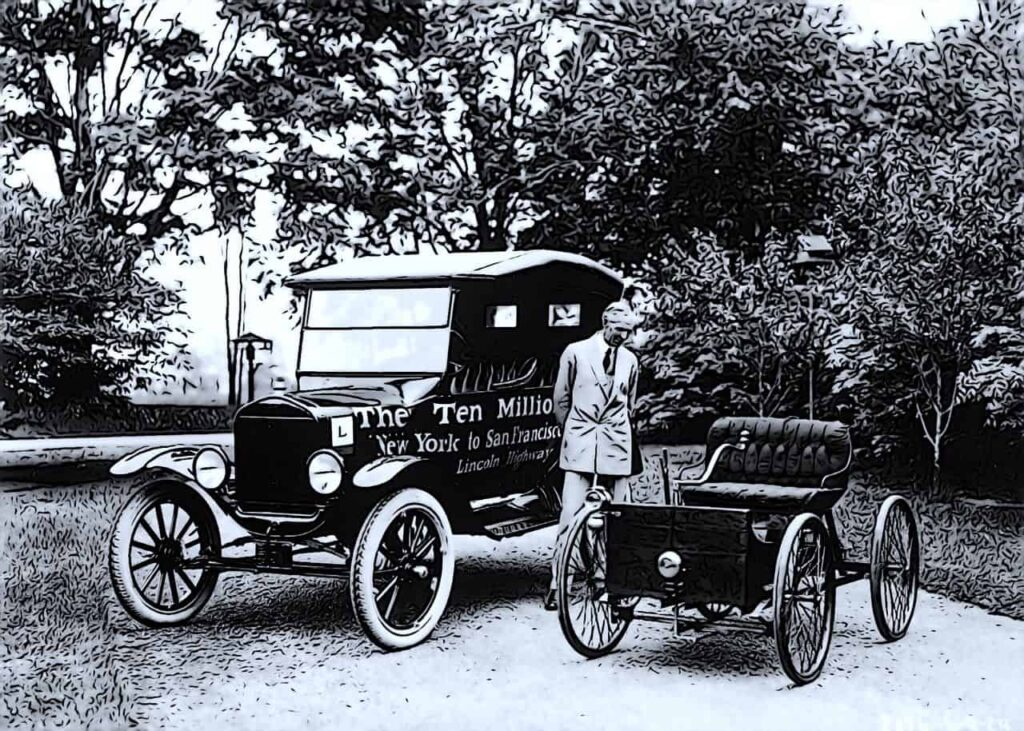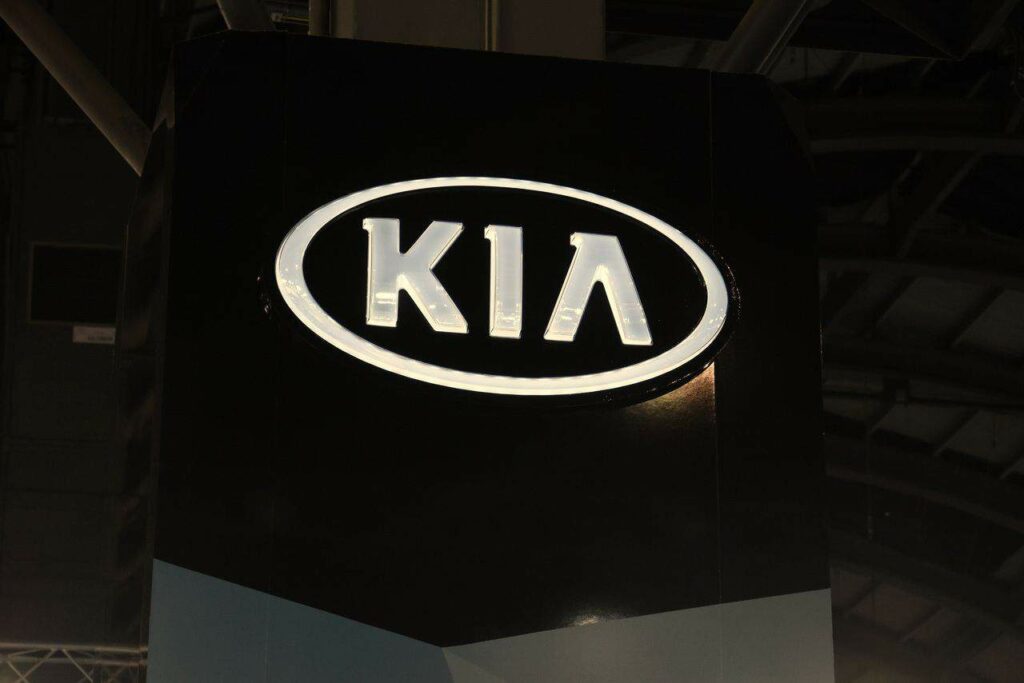29 July 2021 Concept Car
Only a few years ago, car warranties were set in stone: Three years or 36,000 miles were all you’d get, regardless of whether you were buying a Porsche or a Dacia, a Volkswagen or a Skoda, a luxury car or a small city model.
This unwritten rule is now under attack, as extra long warranties are turning into a new battle ground for car manufacturers to attract customers.
Are you looking to buy a car? Then this is great news for you.
Warranty terms have been gradually edging up to their current levels for decades. They are an expression of a manufacturer’s trust in their vehicles and can be a reason to favour a particular make or model over another.
They’re not suddenly going to come down again. If anything, expect more manufacturers to come around.
This development has recently sped up even more. Brands like KIA have seemingly upped the ante when it comes to extra long warranties. And the competition is responding.
Longer warranties don’t just seem like a great thing. They really are. However, things won’t change over night. And so, at least for a few years to come, we are entering a phase where you may have to decide between excellent models with slightly shoter warranties and potentially less great cars with extra long warranties.
Which of these two options is best?
That depends on a variety of factors – and you’ll need a bit of expertise to get to the heart of the matter.
Can you expect 10 year car warranties to become the new industry standard? Should an extra long warranty be a reason to buy a particular car? Should a short warranty be a reason not to?
In this special, we’ll help you arrive at a deeper understanding of the topic so you can take the right decisions. Of course, there are still no guarantees, even when it comes to warranties. But one thing’s for sure: Things are improving – slowly, but very surely.
For a different point of view from our blog:
Car Warranties are not as important as you may think! Here’s why.
 Some things do change for the better.
Some things do change for the better.When Ford started selling its legendary Model T, it came with an early version of the modern-day car warranty: 90 days on material and 30 days on labor – although it was quick to add that there was “no guarantee whatsever on fan belts, glass, bulbs, wiring, transmission bands, hose connections, commutator shells, rollers, spark plugs or gaskets.”
Were customers appaled? Shocked? Still afraid to take the plunge faced with a new transportation device which was as yet untested by a mass public?
Quite on the contrary: They fell over themselves to buy the Model T, which would go on to become one of the most lucrative products of the 20th century and one of the pillars of the worldwide car industry. As Assembly Mag put it, it really ‘changed the world’.
We would never accept a modern car with just barely a quarter-year protection against damage. And this despite the fact that just about every contemporary model, regardless how cheap it may be, is far more reliable than the Model T ever was.
This goes to show just how far we’ve come in terms of customer rights and the general improvement in service.
Of course, there’s a reason why car manufactureres have suddenly become so generous with their warranty policies: Their products has become so good that there’s no real danger in taking long term responsibility for it. Just like Zippo lighters which come with a lifetime warranty, the benefit of extending powertrain protection for a few more years exceeds the risk of losing money on expensive repairs.
It is worth noting in this respect that specific warranties are already longer than the aforementioned 3 year term (sometimes called bumper to bumper warranty, as it applies to the entire car).
 Rust is a great example.
Rust is a great example.For decades, rust was probably the biggest risk factor for any car buyer. Rust could destroy an otherwise perfectly great car and it separated great brands from lesser ones. Especially Italian makes found it hard to get the steel quality right and were plagued by a bad reputation for decades.
Today, improvements in materials and protective substances has all but eliminated rust as a major risk factor. Which is why rust protection warranties tend to be longer – sometimes significantly so – than the average bumper to bumper guarantee.
Further Reading:
Used Cars: Is rust still a thing?
Before we take a closer look at extra long warranties, let’s take a look at where the industry is currently at. This will serve as a gauge to compare supposedly spectacular improvements against.
As mentioned, the bumper to bumper warranty for most makes is currently at 3 years or 36,000 miles on the odometer – whichever you reach first.
Although there are still brands out there which also cover rust for just three years, most experts today consider this extremely measly. Even Dacia is now offering a six year corrosion warranty and many competitors have extended this to a staggering twelve years.
These two warranties – corrosion and bumper-to-bumper – make up the cornerstone of most car warranty contracts. Now, let’s take a look at where things are headed.
According to Business Insider, a few brands have begun redefining the standards of the industry. These, according to the website, include “Audi, BMW, Mercedes-Benz, Porsche, Lincoln, Cadillac, Buick, Hyundai, Kia, Genesis, Mitsubishi, Volkswagen, Tesla, Lexus, Acura, Infiniti, Land Rover, and Jaguar”.
Clearly, these are mostly not names of cars for the average consumer. However, there are a few popular brands in there,m from Hyundai and Kia via Mitubishi to Volkswagen.
Regardless of their prestige, the tendency for all of these brands appears to be a five year bumper-to-bumper term (or 60,000 miles, respectively).
Although this general warranty doesn’t cover everything, it is quite comprehensive and should protect you against most major defects. Combined with a decent powertrain guarantee, this should keep you safe from harm for quite a while.
 The future: 10 years?
The future: 10 years?If you’ve followed the car world at least a little bit, you will probably have heard about Kia’s too-good-to-be-true 10 year warranty offer. Compared to this, even the extended warranties we talked about in the paragraph before appear quite puny.
So has Kia turned the laws of physics upside down? And if so, how have they done so? Have they made you an offer you can’t refuse?
Not so fast. It is true that Kia has marched ahead and put the bar just a little bit higher. That said, you need to dig a little deeper. Things aren’t quite what they seem.
Let’s take a closer look at Kia’s ten year warranty term and find out what you’re actually getting.
It only applies to powertrain issues.
Let’s repeat that: The magical ten year warranty will not cover you unless parts of your Kia’s powertrain are affected. This includes your engine, axles, transaxle, transmission, differentials, and propeller shafts.
Yes, these are among the most expensive parts of your vehicle. But, speaking realistically, they don’t break down very easily. Chances are they’ll work just fine for the first ten years of driving your car.
Further Reading:
Is a used Kia a good idea?
So before you run wild and head straight for your local Kia dealer, know this: The large majority of problems with your car, including corrosion by the way, are not covered by it.
Certainly, when it comes to powertrain warranties, Kia has taken the lead. That said, other brands have already followed suite. Mitsubishi, too, is offering a ten year powertrain warranty (not quite as relevant, perhaps, since the brand is no longer as present in the UK as it used to be). And Volkswagen’s six year term also isn’t too shabby.
To some, the big benefit of such a long powertrain warranty lies not just in personal peace of mind. It is also a great plus when selling the car on the private market, where these kinds of additional benefits can contribute greatly to a better sales price.
Too bad, then, that the warranty is not 100% transferable. As soon as your Kia changes owner, the once proud powertrain warranty comes down to the moderate term of the regular basic warranty. Which still isn’t bad – just not the huge bonus you might have hoped for.
 What about the other elements of the Kia warranty?
What about the other elements of the Kia warranty?In an insightful analysis, car website motor1 took a closer look at Kia’s warranty and how it actually compared to the industry standard.
Their conclusion was somewhat sobering:
“A simple way to describe Kia’s new vehicle warranty is, in fact, the way they choose to describe it: limited. While powertrain coverage is exceptionally lengthy, certain parts only receive protection for a few years. There’s quite a bit of fine print when it comes to eligibility for certain parts and what coverage is transferable.”
In short, Kia’s basic warranty runs for five years, which is up there with the best right now. Still, expect most brands to follow suite very soon. Also, as hinted at by motor1, this warranty is not very comprehensive. A notable exception are the car’s audio/entertainment system, paint and the original battery, all of which fall under a much shorter 3 year term.
Corrosion (also sometimes called anti-perforation coverage) is only 5 years or 100,000 miles, which is certainly not a particularly ambitious goal. As motor1 points out, “it does not, protect against perforation from the outside in, such as sand, hail, stones, or perforation by accidental damage.” Nothing new there, and certainly not a reason to favour these vehicles over any other.
Do these limitations matter? Let’s put it this way: Kia’s are still reliable, likeable and extremely useful vehicles. You just shouldn’t buy them on the strength of their warranty alone.
If there’s one thing that the Kia warranty case proves it’s that there’s no free meal. If you’re getting more in one respect, you can expect that corners will be cut in another.
That said, it’s clear that the industry is re-thinking its approach to warranties. Increasingly, manufacturers are realising that a warranty is part of relationship-building with their customers. The longer you pledge to take care of a car, the deeper your contact with its owner gets, the more you’ll understand about her needs and about the specific issues of your cars. All of which is vital information and can contribute to better products and better service.
Toyota is now introducing a new approach to warranties that could well herald a new phase. Its Relax program will be rolled out across several divisions and model generations. So even if you bought a used Toyota or if you’ve been driving yours for a few years, you could still potentially make use of its benefits.
Toyota’s Relax program is applicable to all of its cars until they’re either 10 years old or have covered 100,000 miles. (For most owners, the limiting factor will probably be the mileage, as the average driver in the UK covers more than that per annum.)
The way it works is that you’re getting a basic warranty of three years/60,000 miles. After that, you can extend the warranty by taking it to an inspection once a year. After the dealer has serviced the car, Toyota then extends the warranty by another 12 months. You can keep doing this until your car celebrates its tenth birthday or until you exceed the aforementioned 100,000 miles limit.
As a driver, you get a much longer basic warranty than with any other competitor. Also, regular servicing is good for your car and Relax encourages you to make this a habit. It also supports second hand sales, since Relax is fully transferable.
For Toyota, meanwhile, Relax builds an even better relationship with its customers. And since repairs need to be done by licensed dealers, it also supports its network of dealerships.
Toyotas have among the industry’s highest satisfaction rates and best reliability numbers, so the company has very little to loose. We expect at least a few of its closest competitors to follow suite with similar offers very soon.
 Can’t you just get an extended warranty?
Can’t you just get an extended warranty?As long as Relax doesn’t become the new status quo, things are clearly going to stay a little confusing for a while. With that in mind, you might be tempted to opt for an extended warranty instead.
The concept behind these is strikingly simple: Rather than buying a car with a very long bumper-to-bumper warranty, why not go for one with an average one and then buy an extension, which gives you a few more years of additional protection?
Extended warranties are very common on the used car market, where they can offer peace of mind. Although they are still of questionable value, it is easy to see why someone would opt for them.
But what about extended warranties for new cars?
Endless articles and essays have been written about this topic. And thanks to plenty of data, we can today give a much better assessment of extended warranties than ever before.
And unless you have a very good reason to believe otherwise, it seems pretty clear that they are simply not worth it.
Creditkarma lists some of the main reasons why this is the case:
Extended warranties usually cover precisely that period of your ownership time, where repairs are least likely.
During the first three years, any serious flaw will most likely manifest itself. Driving a car reveals serious issues, which you can then deal with as part of your warranty.
Once these kinks are smoothed out, most contemporary vehicles will drive perfectly until just about the ten year mark. Then, a new set of issues will tend to manifest itself, usually those related to moving parts subjected to wear and tear.
Extended warranties therefore tend to cover the phase where cars are fine. Which explains why very few drivers ever make use of them, would not get one for their next car and consider them a waste of money.
Long or even very long warranties are the future of the industry. They provide value to drivers and manufacturers alike. We can see them turning into something similar to a mobile phone contract where both sides have something to gain from staying locked into an existing relationship.
For the time being, we recommend you keep the warranty in mind, but don’t use it as a main decision criterium.
Take used cars, for example. These are still by far your best option if you want to save costs. Still, many of these no longer have any warranty anymore at all. That alone is by no means a reason to reject them, however.
What really matters is whether you can trust the dealer to present their products with utmost care. At Concept Car Credit, we take pride in only selling used cars which feel almost as good as new and which have been extensively tested, serviced and brought up to speed.
For any questions, contact our friendly team or drop by our Showroom in Manchester. We’re looking forward to your visit!
29 July 2021 Concept Car